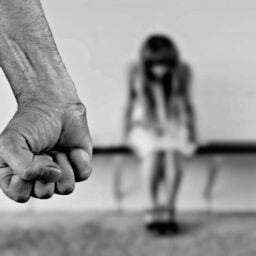INTRODUCTION
From climate change to terrorism, the list of current global challenges is long and doesn’t seem to end with the new addition of COVID-19. Amidst these, the issue of overpopulation is not new. At present, our nation’s contribution to the world population is approximately 18% and United Nations anticipated India to become the world’s most populous nation much before 2027.[1]
Such alarming forecasts necessitate some action on part of the government. At the national level, the Ministry of Health and Family Welfare encourages family planning guidelines to curb the increasing population but in recent times states are considering their population control policies too.[2] This includes Uttar Pradesh, which has already circulated a draft bill in public to invite suggestions.[3]
Being the most populous Indian state, UP’s estimated population is 23 crores, out of which one-third comprise the youth.[4] The state’s population growth rate is even more than the entire nation’s average[5] and to stabilize the ever-growing numbers, the state government had decided to roll out the Uttar Pradesh Population (Control, Stabilization, and Welfare) Bill, 2021.
If implemented, the legislation would start a “two-child norm” in the state for everyone. The bill begins with the objective to ensure the welfare of all in the state by promoting a two-child model which would balance the state population. This articles an attempt to critically analyze the proposed bill’s Section 7, 8, and 10 to observe the possible impact it can have on the poor residents of the state.
OVERVIEW OF THE BILL
The bill overall conveys that people undergoing “voluntary sterilization” surgeries to follow the two-child policy would be awarded various benefits whereas others would have to deal with certain disincentives. The incentives under the bill are mostly (not wholly) applicable to government servants dealing with increments, promotions, other educational and healthcare benefits to their children. The disincentives include ineligibility for local-body elections, being barred from government subsidy schemes, etc.
CRITICAL ANALYSIS
Section 7 of the bill talks about special benefits to the couple living below the poverty line with only one child provided either spouse undergoes sterilization operation voluntarily.[6] Unfortunately, the bill overlooks the problem of awareness and finance regarding such a surgery amongst the poorest of the poor in India. 2011-12 statistics say Uttar Pradesh is home to 29.43% of Indians living below the poverty line.[7] While people living in utmost misery and extremely low-income levels manage hard to keep their body and soul together, it seems very unreasonable to expect them to undergo such surgeries.
Even if we consider that mass sterilization camps would solve the problem then one must not forget the grim tale of events that unfolded a few years back in similar camps being held in India. Not only there were reports of many women dying due to mass sterilizations being done under improper conditions, but women were kind of pushed towards such surgeries because of the compensation that would come from the government to those who agreed to get operated on.[8]
There were multiple reports of bad quality medical equipment being used and a lack of proper management, especially in rural areas.[9] The ones who suffered the most were women from underprivileged communities again who already had poor physical conditions, making the operations riskier.[10] The deaths and complications arising in women due to such mass sterilization were increasing so much that the apex court had to intervene and order the government to shut down such camps.[11]
It won’t be an exaggeration to assume that such incidents might repeat if sterilizations are encouraged through strong incentives. Women from poor families might be forced towards such sterilizations. Notable is the 1:52 Indian male-to-female sterilization ratio which reflects that the women seem to be pushed more towards it due to the patriarchal mindset that women solely are supposed to bear the weight of family planning even though male sterilization is safer.[12]
It can’t also be ignored that due to lack of awareness and inability to afford contraceptives, people tend to have more kids. Section 8 of the bill might make the matters worse for them as if they won’t follow the two-child norm then not only they would miss out on government subsidies but also ration card limits would be reduced to four.[13] It would increase the already high hunger index in the state.[14] In what has been one of the toughest times of the country due to the COVID-19 pandemic, such disincentives will only exacerbate the pain of those who were pushed further down in the poverty circle ever since the second wave.
As per the data of NFHS-4 (2015-16), the socially backward classes like SC, ST, OBC indicated a higher fertility rate than the rest.[15] With the introduction of the bill, people of these communities in UP would become ineligible to represent themselves in local-body elections because it would completely toss them out of the democratic process, leaving their demands and problems unaddressed. Hardships don’t end here as Section 10 would make them ineligible to even apply for a government job.[16] This might severely affect the chance of marginalized sections of society in securing government jobs and would deprive them of a chance to end their poverty.
With around 52.7% of its people who are aged below 25 years of age, UP is one of the youngest states in India.[17] This young future generation will bear the brunt of the consequences of this bill as they would be omitted out of subsidies, government jobs, etc. Things like government welfare schemes and ration card facilities that were introduced for the benefit of the people might no longer be available to a section of the society that needs it the most.
CONCLUSION
Instead of relying on “coercive methods”, focus on educating and making people aware of the concept of family planning seems an ideal alternative. With a literacy rate that is even lower than the whole nation’s average[18], Uttar Pradesh shall invest in education to regulate the overall fertility rate. The fact that Tamil Nadu, Kerala dropped down their fertility rates through increasing literacy makes it evident that the population can be controlled without harsh measures.[19]
An emphasis can also be laid down on the practice of using contraceptives that are safer instead of riskier alternatives like sterilization surgeries. Therefore, considering all the potential challenges, if the bill is implemented it is most likely that the poor again would be at the suffering end, making it unfeasible to achieve the welfare of all which is the prime objective of the bill.
Author(s) Name: Lovepreet Kaur (National Law University, Delhi)
References:
[1] Press Trust of India, ‘India’s Population to surpass that of China around 2024: UN’ The Times of India (Chandigarh, 21 June 2017)
[2] Angana Chakrabarti, ‘How UP’s proposed population policy compares to two child norms in other states’ (The Print, 14 July 2021) < https://theprint.in/india/how-ups-proposed-population-policy-compares-to-two-child-norms-in-other-states/695086/> accessed 7 August 2021
[3] Amit Chaturvedi, ‘Uttar Pradesh govt releases new population policy: All you need to know’ The Hindustan Times (New Delhi, 11 July 2021)
[4] Abhijit Das, ‘Why UP’s proposed population bill is bad as policy and politics’ The Indian Express (Mumbai, 20 July 2021)
[5] Saurabh Chauhan, ‘UP Population far from exploding, but still soaring’ The Hindustan Times (New Delhi, 23 September 2019)
[6] Uttar Pradesh Population (Control, Stabilization and Welfare) Bill 2021, s 7
[7] Reserve Bank of India, Number and Percentage of Population Below Poverty Line https://rbidocs.rbi.org.in/rdocs/Publications/PDFs/154TA148090CBD6E4ED59633E6820C6E4819.PDF
[8] Jason Burke, ‘India mass sterilization: women were ‘forced’ into camps, say relatives’ The Guardian (New Delhi, 12 November 2014)
[9] Suchitra Mohanty, Nita Bhalla, ‘Indian activists welcome top court’s ban on ‘sterilization camps’ after women’s deaths’ (Reuters, 16 September 2016) < https://www.reuters.com/article/us-india-women-sterilisation-idUSKCN11M1YT> accessed on 7 August 2021
[10] ibid
[11] Devika Biswas v. Union of India, (2016) 10 SCC 726
[12] Neetu Chandra Sharma, ‘Women remain the sole acceptors for surgical birth control in India’ (Mint, 25 January 2018) <https://www.livemint.com/Politics/v22DrDyrXxN9dZ3ynB3ruJ/Women-remain-the-sole-acceptors-for-surgical-birth-control-i.html > accessed 7 August 2021
[13] Uttar Pradesh Population (Control, Stabilization and Welfare) Bill 2021, s 8
[14] International Food Policy Research Institute, India State Hunger Index: Comparison of Hunger Across the States (February 2009) http://cdm15738.contentdm.oclc.org/utils/getfile/collection/p15738coll2/id/13891/filename/13892.pdf
[15] Rema Nagarajan, ‘UP population policy may put poor at a disadvantage’ The Times of India (New Delhi, 14 July 2021)
[16] Uttar Pradesh Population (Control, Stabilization and Welfare) Bill 2021, s 10
[17] Press Trust of India, ‘More than 50% of India’s population 25 yrs or older: Survey’ (Mint, 3 July 2020) < https://www.livemint.com/news/india/more-than-50-of-india-s-population-25-yrs-or-older-survey-11593793054491.html> accessed 7 August 2021
[18] Press Trust of India, ‘UP literacy rate poor than national average: Report’ The Hindustan Times (New Delhi, 8 September 2020)
[19] Bansari Kamdar, ‘The Gendered Impact of Uttar Pradesh’s Population Control Bill’ (The Diplomat, 30 July 2021) <https://thediplomat.com/2021/07/the-gendered-impact-of-uttar-pradeshs-population-control-bill/ > accessed 7 August 2021
















